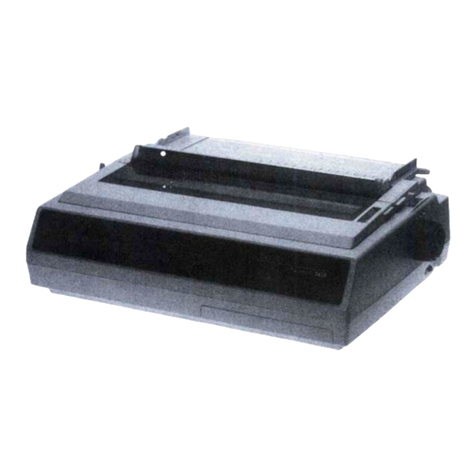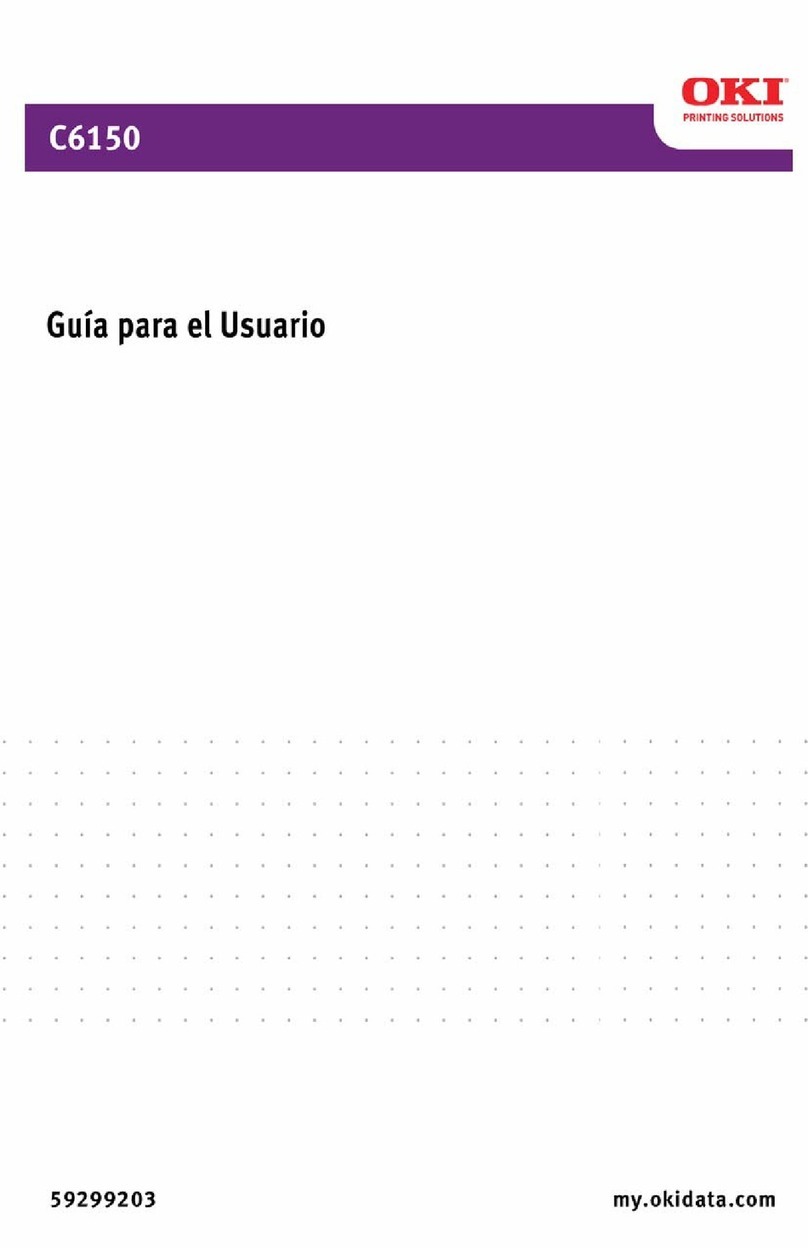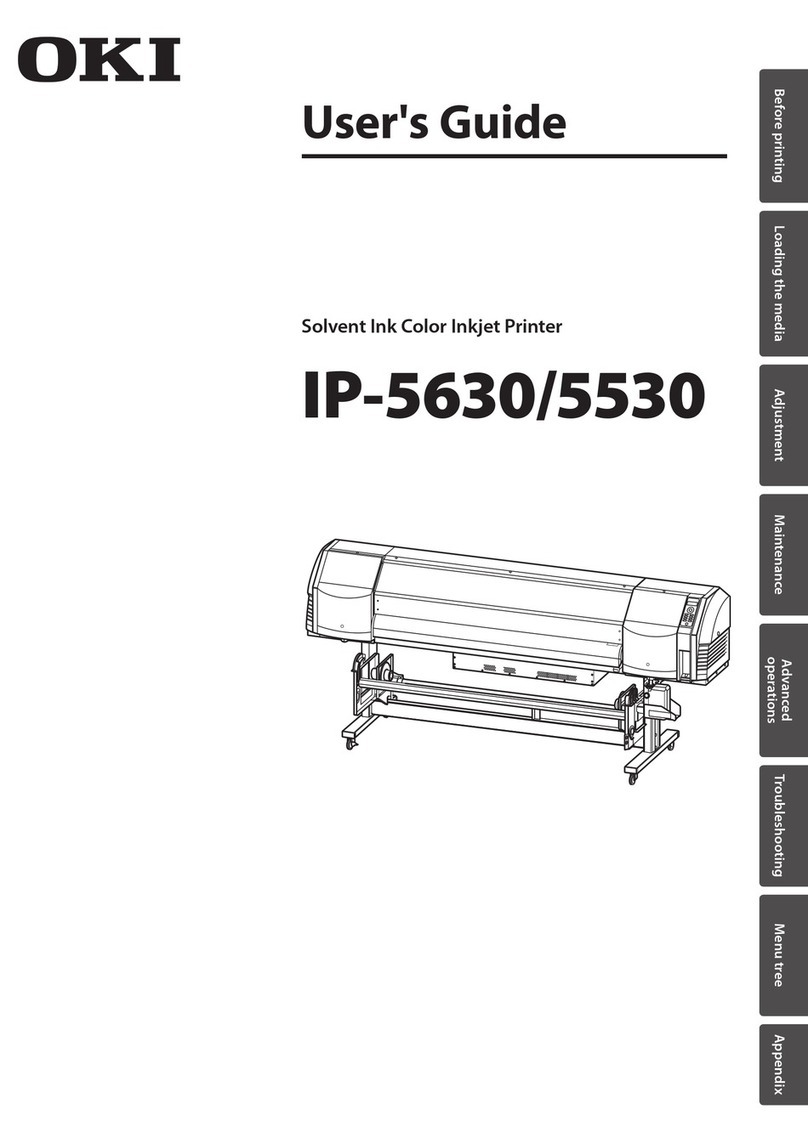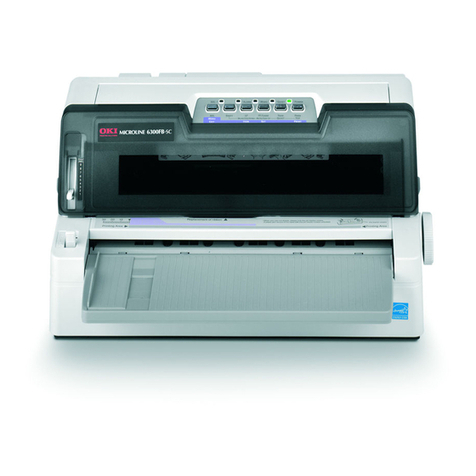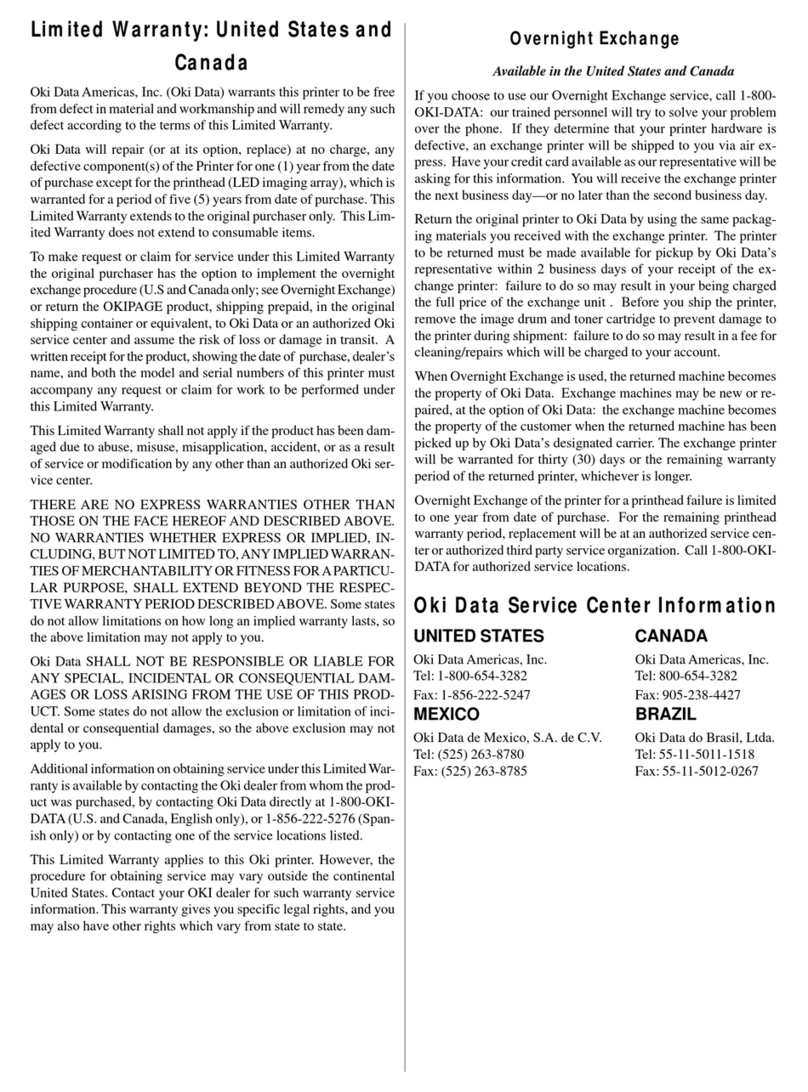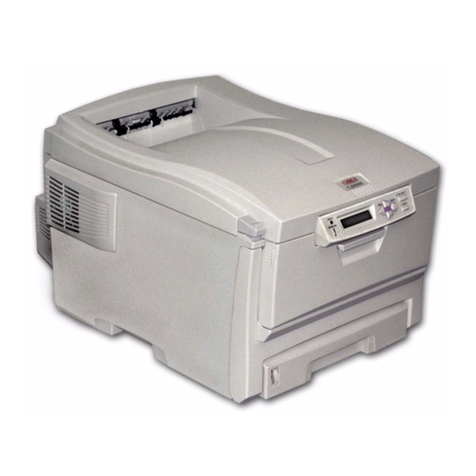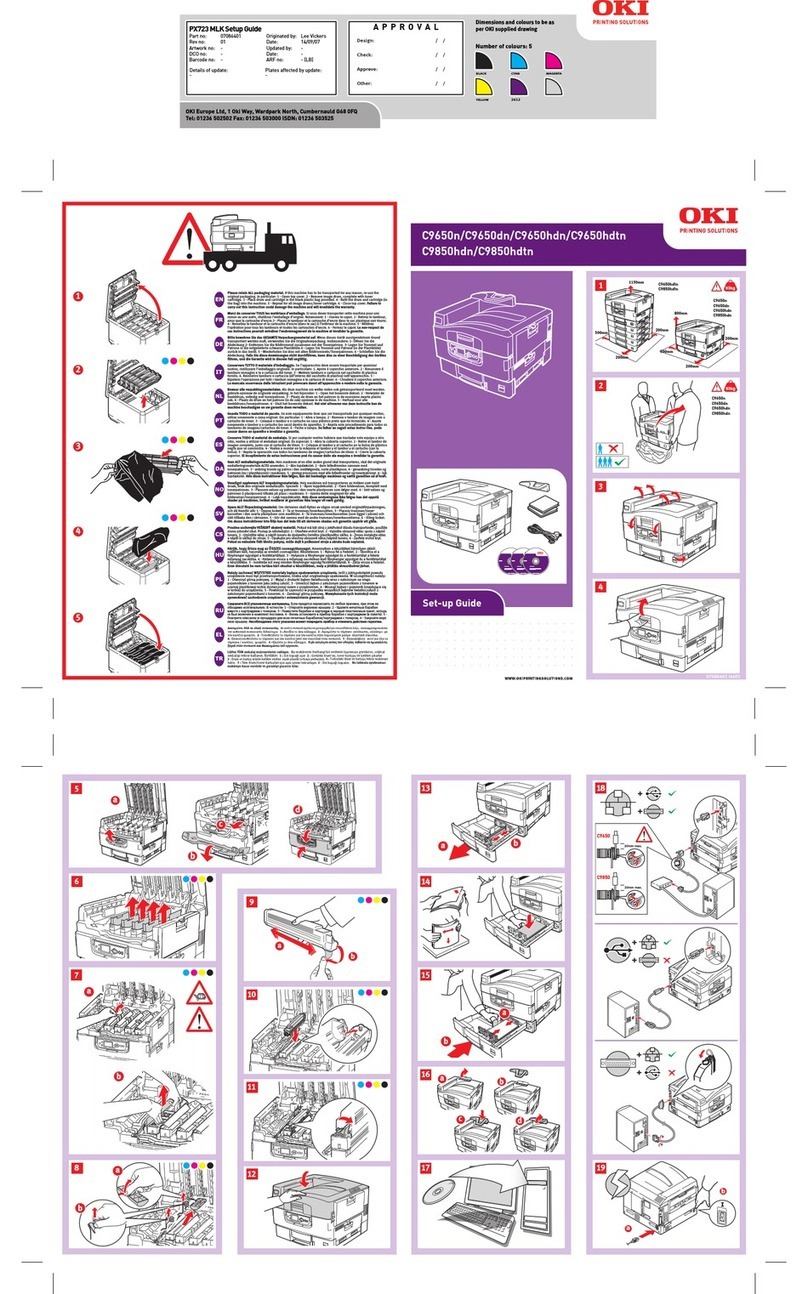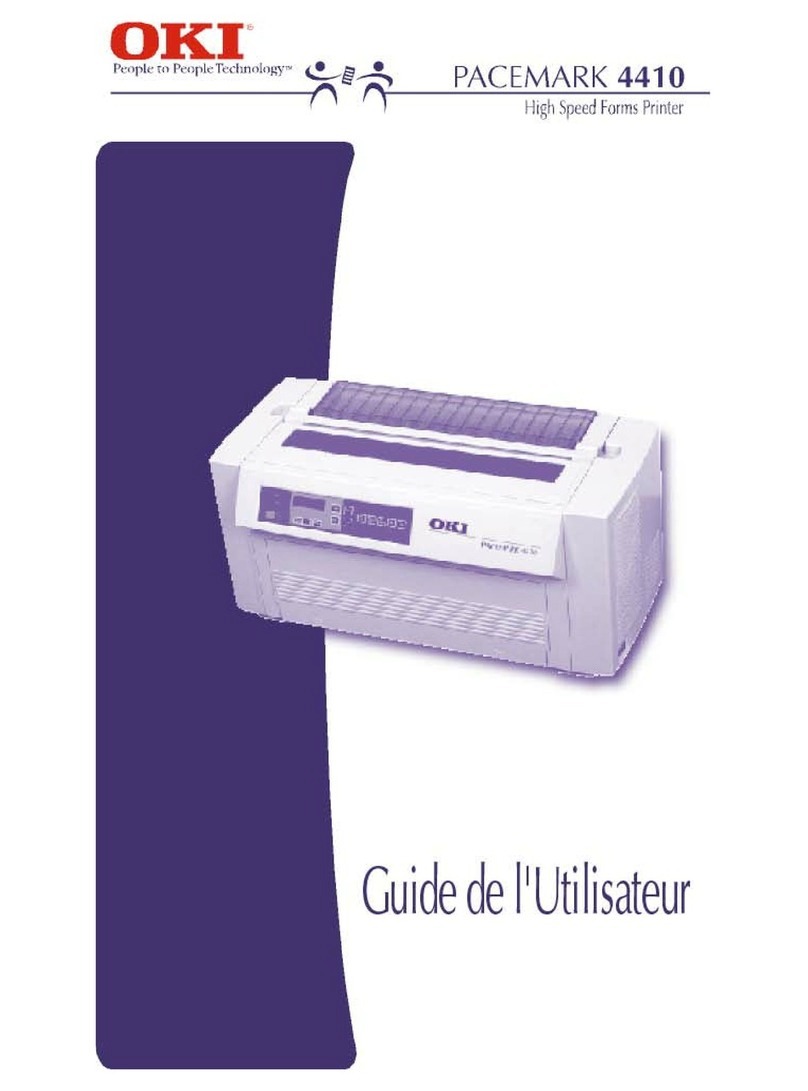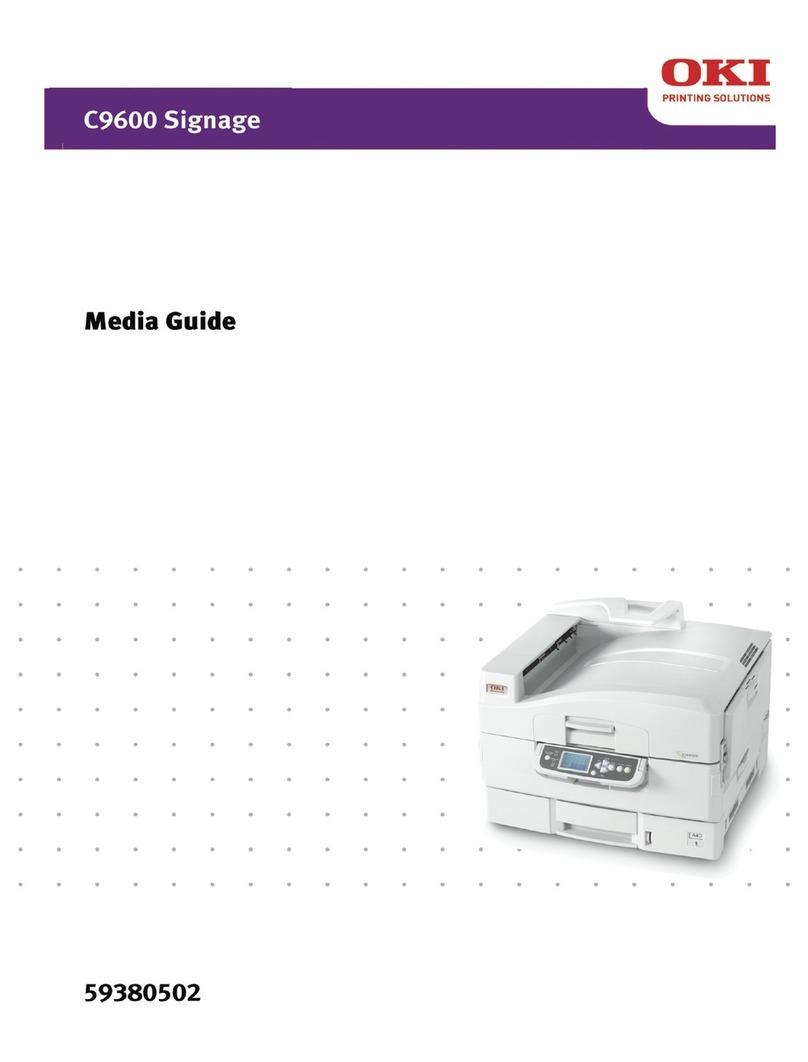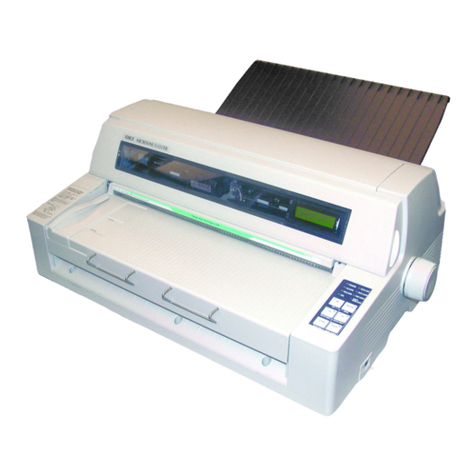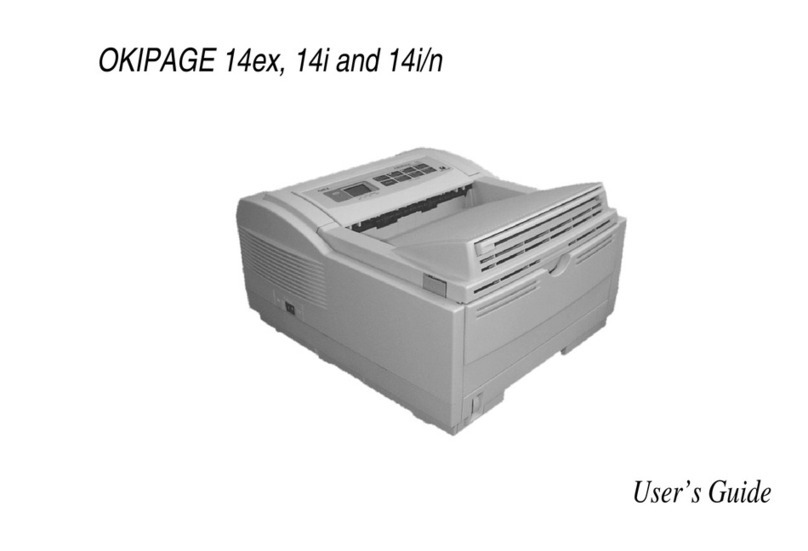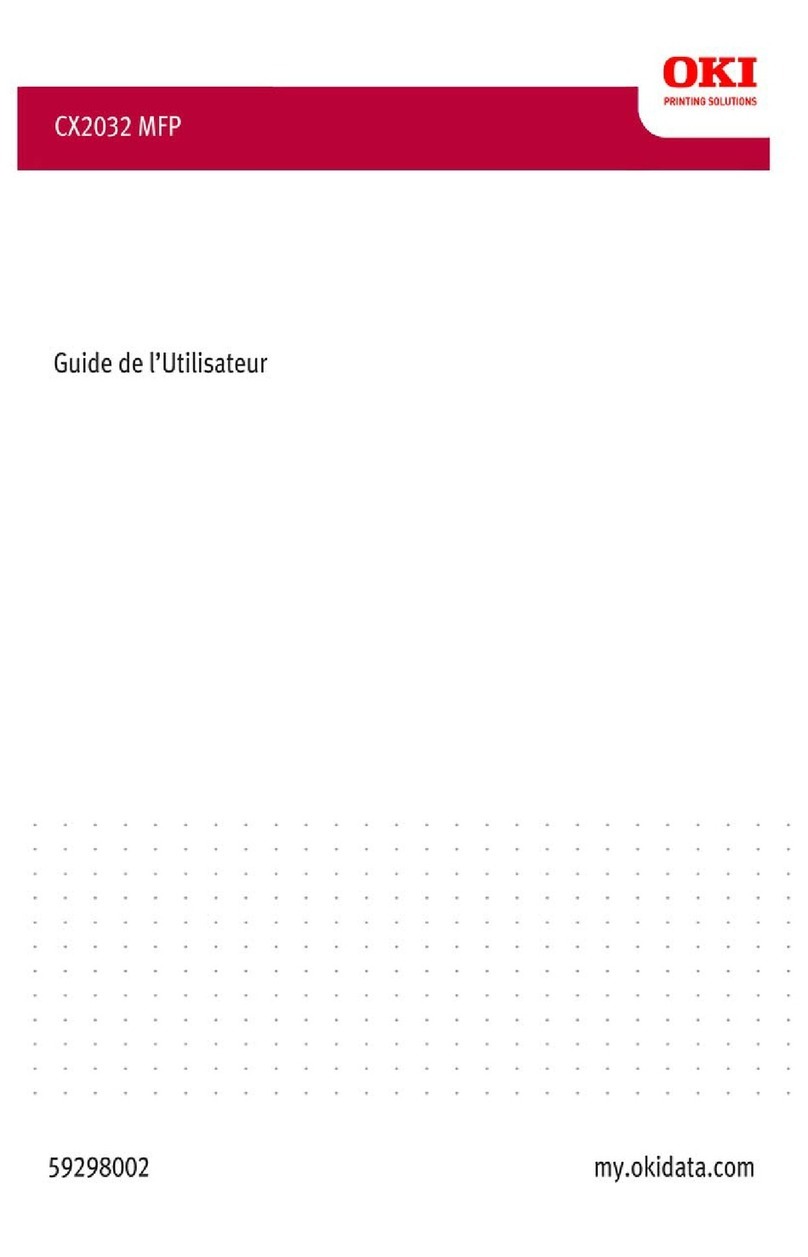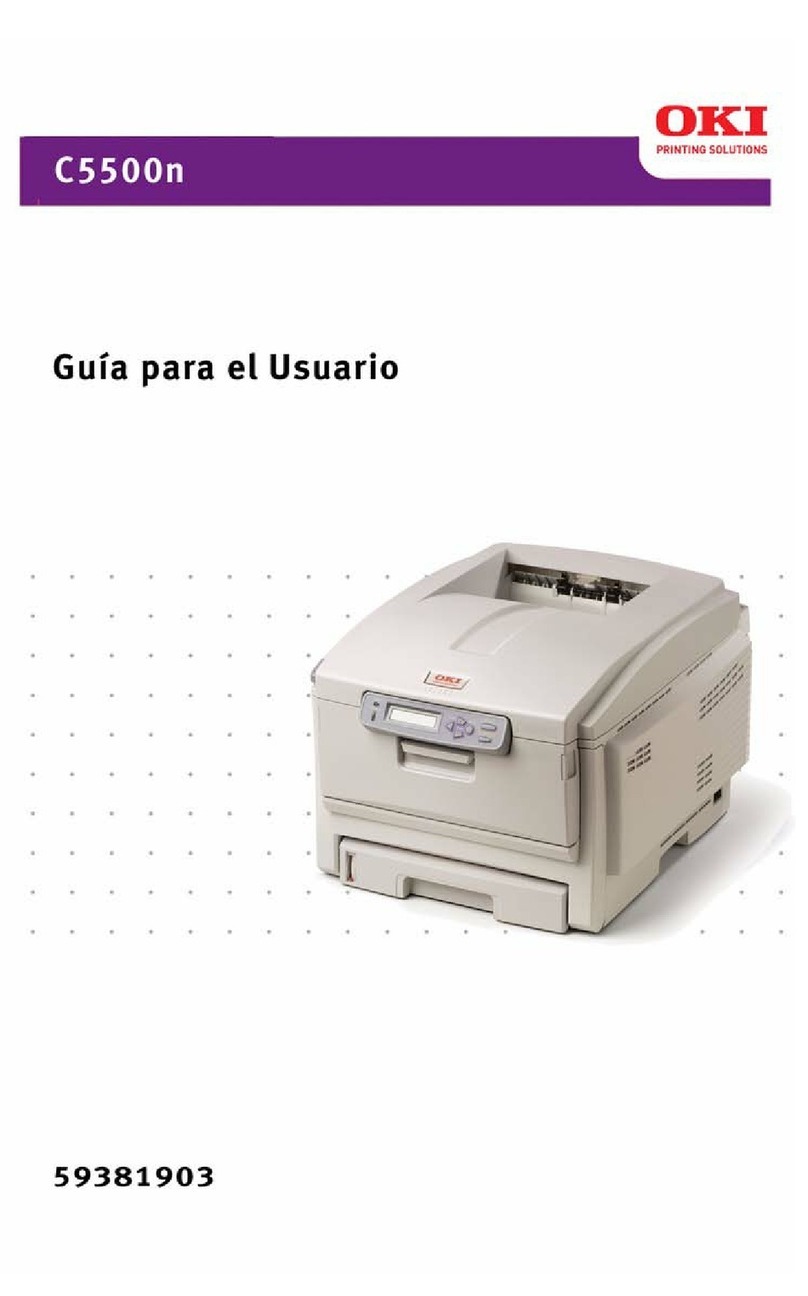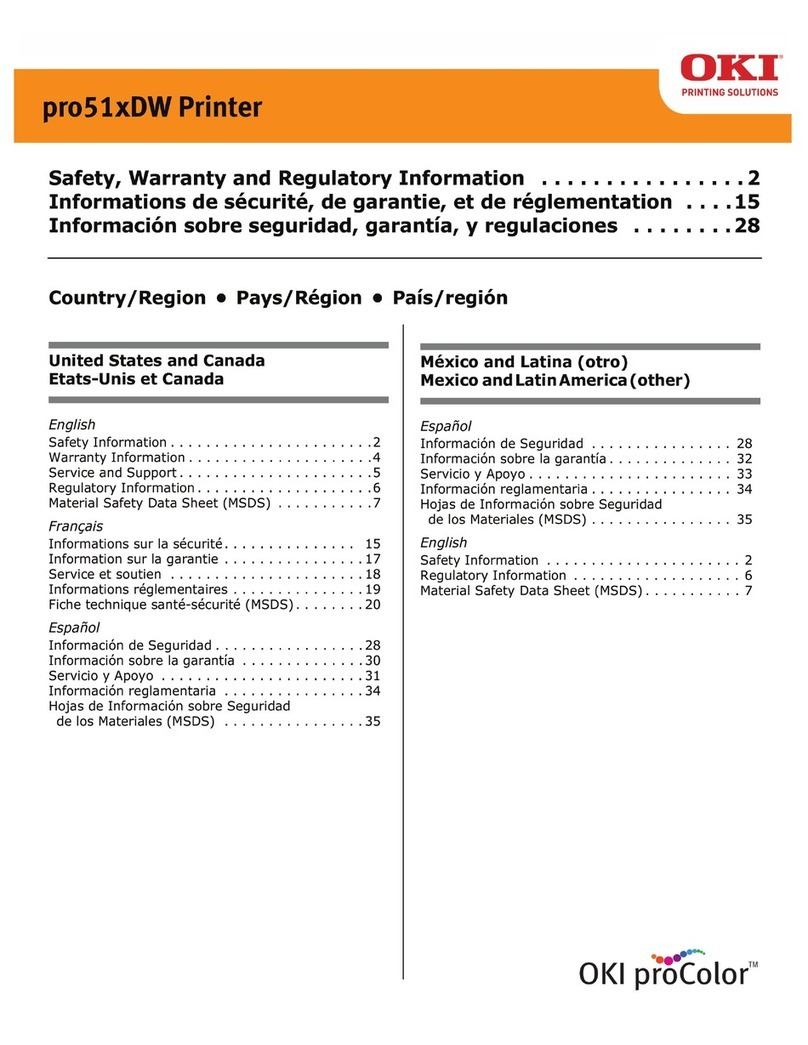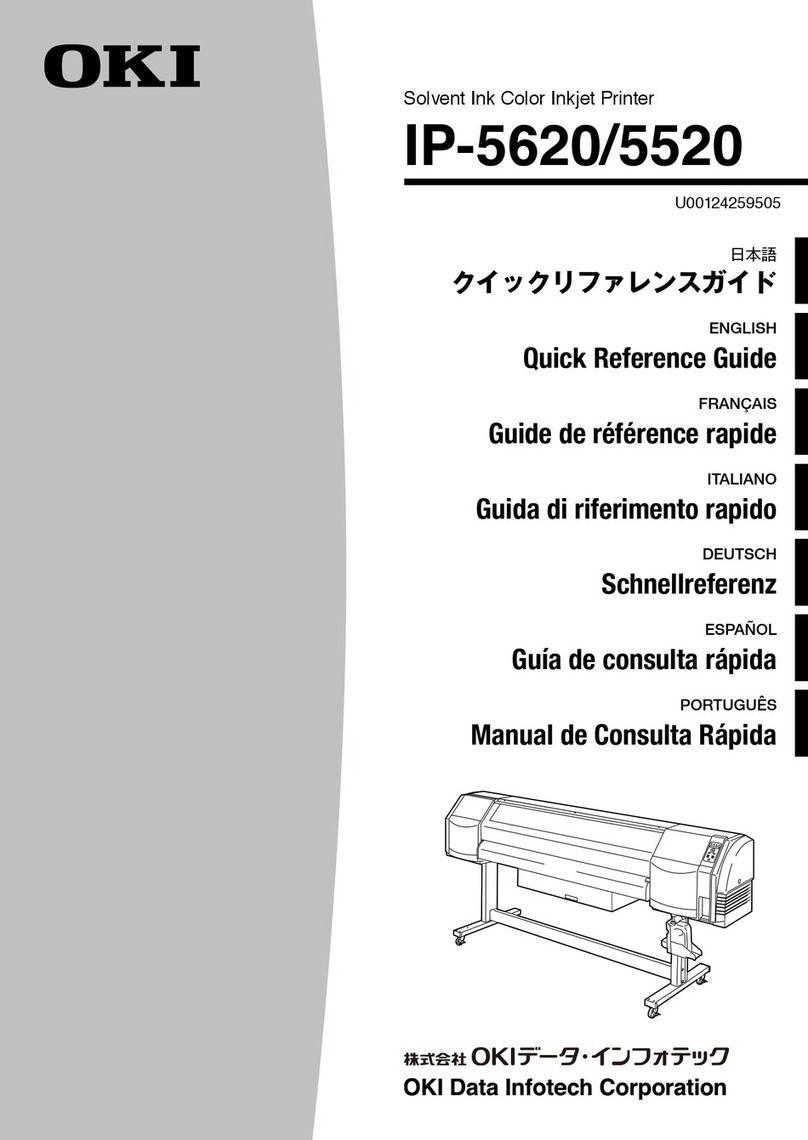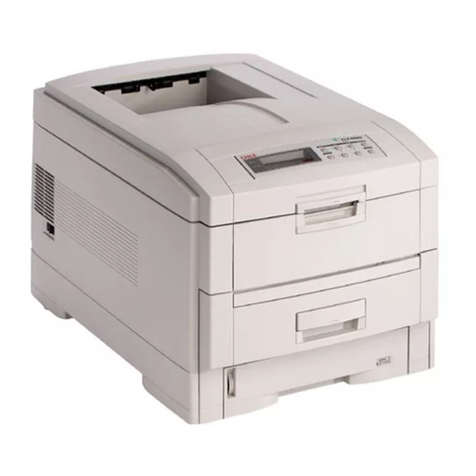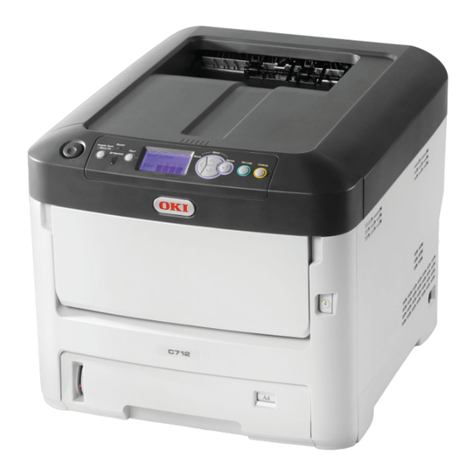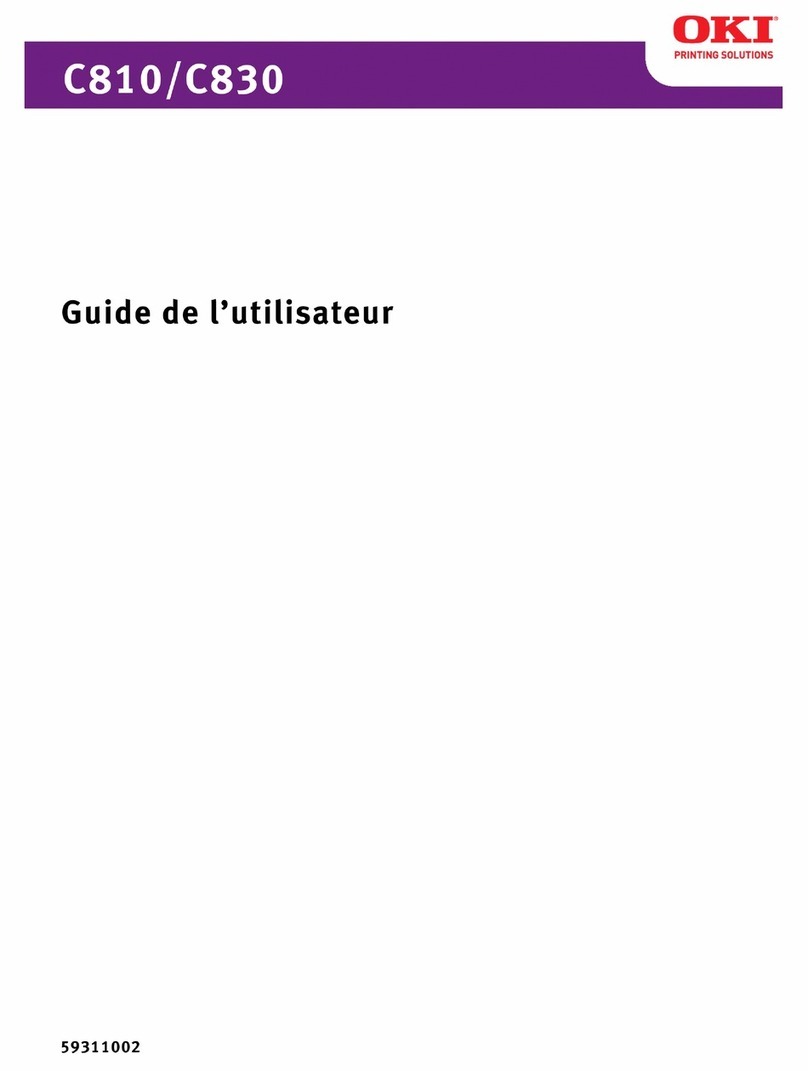
44205301TH Rev.1 4 /
Oki Data CONFIDENTIAL
Index
1. Configuration...........................................................................6
1.1 System configuration............................................................................................7
1.2 The Configuration of printer..................................................................................8
1.3 Optional parts.......................................................................................................9
1.4 Specifications .....................................................................................................10
1.5 Specification of interface ....................................................................................13
1.5.1 Specification of USB interface ....................................................................13
1.5.1.1 General of USB interface.....................................................................13
1.5.1.2 Connector and cable of USB interface.................................................13
1.5.1.3 USB interface signal ............................................................................13
1.5.2 Specification of network interface...............................................................14
1.5.2.1 General of network interface................................................................14
1.5.2.2 Connector and cable of network interface ...........................................14
1.5.2.3 Signal of network interface ..................................................................14
1.5.3 Specification of ACC interface ....................................................................15
2. Operating instructions..........................................................16
2.1 Electrophotographic processing mechanism......................................................17
2.2 Printing process..................................................................................................21
3. Set up .....................................................................................32
3.1 Notes and precautions........................................................................................33
3.2 Unpack method ..................................................................................................34
3.3 Setting method ...................................................................................................35
3.4 List of equipments and accessories ...................................................................36
3.5 Assembling method............................................................................................37
3.5.1 Assemble the main body of the printer .......................................................37
3.5.2 Cable connect.............................................................................................43
3.5.3 Optional part installation and confirmation..................................................45
3.6 Setting content print (Configuration)...................................................................56
3.7 Connecting method ............................................................................................57
3.8 User used Paper confirmation............................................................................59
4. Component replacement......................................................60
4.1 Precautions on component replacement............................................................61
4.2 Method of component replacement....................................................................63
4.2.1 Belt unit.......................................................................................................63
4.2.2 Fuser unit....................................................................................................64
4.2.3 Left side cover.............................................................................................64
4.2.4 Right side cover ..........................................................................................65
4.2.5 Faceup tray ................................................................................................65
4.2.6 Rear cover...................................................................................................66
4.2.7 LED Assy/ LED Assy spring........................................................................66
4.2.8 Control PCB................................................................................................67
4.2.9 Top cover Assy............................................................................................68
4.2.10 Top cover ....................................................................................................69
4.2.11 Control panel Assy .....................................................................................69
4.2.12 Board PRG/ LCD........................................................................................70
4.2.13 Frame panel Assy.......................................................................................71
4.2.14 Low voltage power supply/Low voltage FAN/ Hopping motor/ Fuse motor.72
4.2.15 Guide eject Assy/ Color regist Assy/ Board-PRY .......................................73
4.2.16 FAN(Fuser) / Belt motor/ High-voltage board/ Cover open switch ..............74
4.2.17 MPT Assy...................................................................................................74
4.2.18 Cover Assy front/ Board-RSF/MPT hopping roller/
Frame Assy separator/ Feeder Assy regist.................................................75
4.2.19 Board-PRZ/ Liftup motor/ Hopping motor//Paper end sensor/
Hopping sensor...........................................................................................76
4.2.20 Feed roller...................................................................................................77
4.2.21 Shaft eject Assy (FU)/ Shaft eject Assy(FD/ Eject sensor ..........................78
4.3 Oiling spots.........................................................................................................79
5. Maintenance Menu................................................................90
5.1 System maintenance menu (for maintenance engineer) ...................................91
5.2 Maintenance Utilities ..........................................................................................93
5.3 Maintenance menu functions..............................................................................95
5.3.1 Self-diagnostic mode ..................................................................................95
5.3.1.1 Operation panel...................................................................................95
5.3.1.2 Ordinary self-diagnostic mode (level 1)...............................................97
